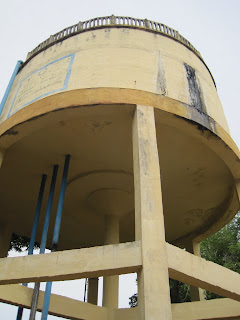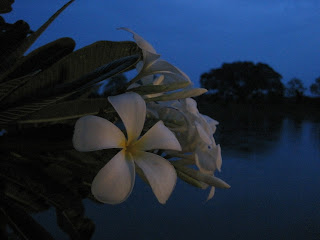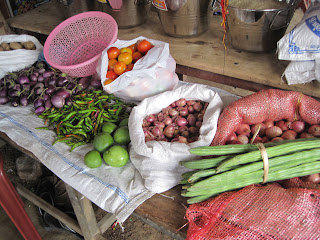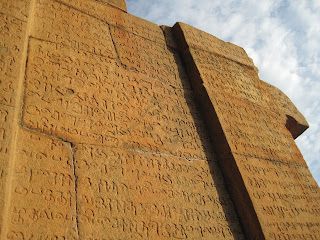







The past week has been a hodgepodge of exploration, some enjoyable retreats, and a heaping pile of work. It's crunch time for our initial research papers in which we discuss the background of our diseases, how they impact people in India, what resources are currently available, and what our proposed interventions are. It will be exciting to have a finished product in hand, but the pressure of producing a useful and well-researched product is palpable.
Part of the field research conducted by our gastrointestinal diseases team (and the CVD team since we happened to be along for the ride) was to visit the Ambulappatu water storage tank and witness the monthly cleaning. This was not quite as exciting as I had anticipated, but interesting nonetheless. The storage tank holds about 100,000 liters of water to be used by people in the small village, which is disbursed by pipes reaching to several public taps. We've learned that an incredible amount of contamination can occur between the tank and the taps, as cracks in the pipes are common- from natural wear and tear, or from animals/vehicles/people damaging them. This is unfortunate considering the high rates of open defecation by both people and animals, pollution from the roads, and bacteria from the sitting water in the rice paddies have easy access to the water that people drink. At the source, the water tank is emptied on a monthly basis and then refilled, and a bucket containing chlorine (just enough to kill the bacteria for a short while) is lowered into the fresh water and swished around. Once the G.I. team has access to water testing kits, samples of water at the source and at the taps will be taken to see where and what types of contamination are occurring. It will be interesting to find out!
Over the weekend I ventured out with some of the interns from ICTPH (the program I'm working with) and Mukesh, the son of the owner of the guesthouse where we stay- he was a helpful tour guide, taking us to the Thanjavur Palace- a rustic concrete building that was once home to Thanjavur Kings, up until the 19th century. It was complete with winding, steep staircases (one of which ascended into complete darkness), connecting multiple levels of open-air platforms with nice views of the surrounding town. After the palace we visited the museum and library next door to learn about the history of Thanjavur's kings and to see some of the oldest scriptures written on palm bark. An interesting day to say the least.
Yesterday our group was given a chance to present our project ideas to the president of IKP Trust (the umbrella organization for ICTPH) and all of the ICTPH staff. It was a little intimidating, but a great opportunity to get feedback from people who will be involved in the implementation of our projects, should they decide they're worthwhile. It was exciting to finally hear about what my colleagues have been learning about, since there is some segmentation between groups. After a barrage of questions and comments, we were lucky enough to be treated to a relaxing day at the Ideal River View Resort (it lives up to its name, sitting right on the bank of a lovely river), including some delicious food and several hours spent in and out of the enormous outdoor pool. It was the calm before the storm, however, as we are all engulfed in work for the next two days, anxious to finish the first piece of our work here.
















































